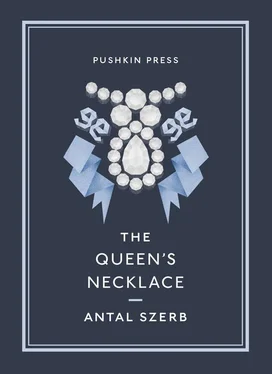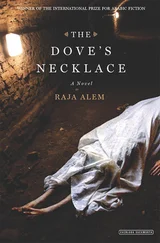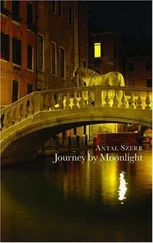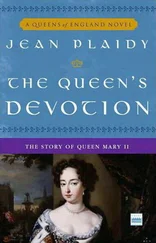And in fact, where things were at their worst, the people did not revolt. It was Tocqueville who noted that the most mutinous estates, for example the relatively affluent Île de France, were those that had suffered least from the old institutions, while those that had endured the most — in Brittany and the Loire estuary — became the powder keg of the counter-revolution.
The nobility were of course rich, at least in theory, since aristocratic privileges had never been as strong as they became immediately before they were terminated. But in practice this group was also struggling, since the obligation to maintain a style of living was proving ever more expensive, and many great families were going bankrupt.
On the other hand the bourgeoisie, in reality if not in theory, were doing rather better. They had been fostered and enriched by the great economic upswing we discussed at the beginning of this book, and they grew wealthy on the luxurious habits of the aristocracy, not just of France but also beyond its borders.
We are not primarily thinking here of the petit bourgeois craftsmen and shopkeepers. In Louis XVI’s reign, such families would all come together to eat in the kitchen in winter because they could not imagine the luxury of lighting fires in two rooms in the house at the same time. And for people at this level there was one traditional attitude that had not yet been eroded by the Enlightenment — Louis XVI was not alone in his religiosity. It was from a section of the bourgeoisie, in fact if not officially the leading sector, from the noblesse de robe , the lawyers, and the financially and intellectually pre-eminent, that the revolutionary discontent originated.
For a hundred years the higher bourgeoisie and the intelligentsia had felt aggrieved by the fact that while the real power lay in their hands, all the grandeur and distinction that should accompany it remained with the nobility. And the arrogance of the nobility increased as their real power declined. In the second half of the century they attempted to seize power again: not only were the most senior positions in both the army and the law restricted to members of noble families, but they sought on the basis of obsolete documents to enforce their former landowning rights over a peasantry that had long been liberated. The attempt failed miserably: the expropriation of the army and the law took place on paper only, simply because the leading bourgeois families had long before bought their way into the nobility. But that futile attempt, together with the steady ennoblement of the bourgeoisie, simply deepened the rift between the old privileged class and the new leaders of society. The intellectuals and the wealthy, says Rivarol — that grandfather of all right-wing ideologists since — found the arrogance of the aristocracy insupportable, and for that reason many of them purchased rank for themselves; but this simply produced a new form of misery. They had been ennobled, but they were not nobility. “The King’s subjects were cured of their bourgeois condition as from scrofula — it left its mark.”
The indignity of finding themselves not quite noble was felt most strongly by those leading intellectuals who were invited into the salons of those aristocrats who so much enjoyed their wit. They stayed as guests in country manors and were showered with all sorts of gifts and distinctions, and yet — in most cases no doubt unintentionally — they were still not accepted as equals. Of all forms of pride, that of the writer is the greatest and the most aggressive, and this pride was constantly being trampled on by the privileged, by their very acts of kindness and goodwill. The best examples of this are Beaumarchais and Chamfort.
“Your Excellency,” Chamfort said to someone. “I know very well what I ought to know, but I also know that it is much easier for you to patronise me than to treat me as an equal.”
There could be no better expression of a writer’s prickly self-regard. There is an echo of this in our period in what happened to a certain Abbé Rousseau. He, like Abélard before him, fell in love with one of his aristocratic pupils, and “finding no way to resolve the conflict of feelings between nobility and low birth”, as he wrote in his farewell letter, he dined at the Palais Royal and then shot himself in the heart.
Between Wealth and Intellect, observes Spengler, there was an unspoken pact of mutual resistance to, and contempt for, the common enemy, Blood. Intellect provided the justification for what Wealth brought about by brute omnipotence — the destruction of privilege and the dethronement of irrational, arbitrary selection on the basis of birth, in the interests of rational selection on the basis of talent and wealth. “Who would have believed,” says the same Rivarol, “that it was not the level of debt, or the lettres de cachet , or any other of the abuses of power — not even the intendants —that provoked revenge, nor was it the interminable tardiness of the justice system that so enraged the nation, but the privileges of the nobility; as is confirmed by the fact that it was the bourgeoisie, the writers, the financiers and all those who envied them, who stirred up the little people in the capital and the peasantry in their villages.”
Chamfort complained that he could never afford to keep a coach under the Ancien Régime, when his weak constitution made it absolutely necessary for him to have one. But he later remarked:
“I only continued to believe in the Revolution while there were so many coaches they knocked people over in the streets.”
“In 1782,” Sainte Beuve explains, “everyone wanted their own carriage, but because they couldn’t all have one, they demanded in 1792 that nobody should.”
But that brings to mind the much-maligned Hegel’s always valid lesson: “The Weltgeist uses human selfishness, envy and other passions as the moving force that drives humanity towards its goal, the unacknowledged but ultimate goal of history — freedom”. And that remains true even if we don’t believe in the great German Weltgeist .
When the besieged fortress finally fell, two different processes came to an end: the attackers had seized and occupied it, but the besieged, whether willingly or unwillingly, had already consented to its being taken. And when the monarchy was brought down in the Revolution, that event also had two sides. The Third Estate and the people demolished the ancient edifice, but the nobility and the monarchy allowed them to do so. And this second element is perhaps just as important as the first. The French aristocracy and the monarchy itself, in very large measure, contributed to the making of the Revolution. This is the key to our symbolic narrative, and its true meaning.
In the second half of the eighteenth century, as we have said, that great if gradual shift of sensibility came about to which we assign the all-embracing term ‘pre-romantic’. But in the France of Louis XVI there were signs of another shift in taste which it would be difficult to link with pre-romantic sentimentality and restlessness. At first glance it would seem to be an omen of a very different kind.
From Mercier we know, for example, that by this time the petit-mâitres were no more. These were people who flittered like butterflies from box to box in the theatre, peeped out through gaps in the stage curtain, clung to the necks of actresses in the passageways, and stood around in the foyer or leant over to assess the legs of ladies stepping into their carriages. Gone too were the bureaux d’esprit , salons presided over by blue-stockings where only very clever remarks could be uttered and the ladies had no other ambition than to be learned. The place of the petit-mâitres was taken by the élégants . The word is still in use today and its meaning is little changed.
Читать дальше












